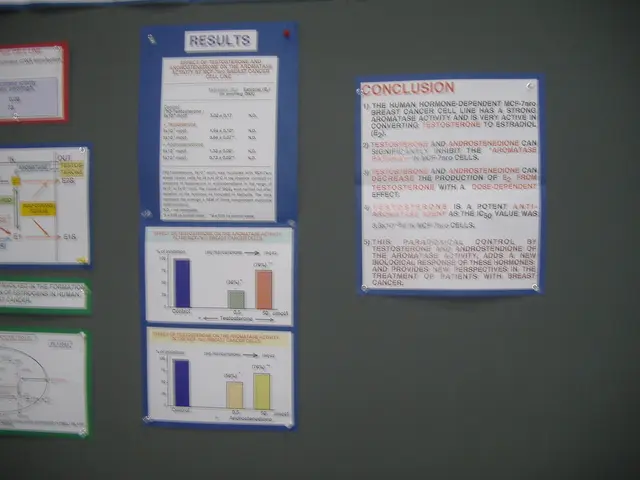All About Why Finishing an Importer's Summary is Crucial!
The Lowdown on Entry Summaries: A Must-Have for Smooth Importing
Importers play a vital role in keeping our economies humming with goods from around the world. One key step in this process is submitting an entry summary, a critical document that ensures compliance with laws and regulations, keeps everything transparent, and promotes fair competition.
What's an Entry Summary, You Ask?
An entry summary, known as CBP Form 7501 in the United States, is a comprehensive document the Customs and Border Protection (CBP) requires. It contains the nitty-gritty on imported goods, such as descriptions, values, country of origin, and tariff classifications, along with duties, taxes, and fees connected to the merchandise. The entry summary is a critical record for both the importer and the government, maintaining transparency and accuracy throughout the process.
Legally Speaking
The main reason importers need to complete an entry summary is to guarantee compliance with various legal and regulatory frameworks. With specific import regulations in each country, designed to protect economies, consumers, and security interests, the entry summary helps customs check if imported goods meet all the requirements—from health and safety standards to intellectual property laws[1][2]. For instance, in the U.S., the entry summary ensures compliance with regulations enforced by agencies such as the Food and Drug Administration (FDA), the Environmental Protection Agency (EPA), and the Consumer Product Safety Commission (CPSC)[3]. Failing to comply with these regulations could lead to costly penalties like fines, seizures, or even the destruction of goods.
Cash Flow King
Correct assessment of duties, taxes, and fees is another critical duty of the entry summary. By giving customs detailed information, they can calculate the precise duty owed, which is vital for funding public services and infrastructure projects[4]. Accurate duties help prevent revenue loss due to underreporting or misclassification of goods and ensure every importer pays their fair share of customs duties, promoting fair competition.
Streamlining the Trade Game
An efficiently completed entry summary makes customs processing a breeze, getting goods through the ports rapidly. This streamlined process is crucial for importers as it directly impacts supply chain operations and delivery schedules[5].
Shining a Light on the Supply Chain
Transparency within the supply chain is vital, and the entry summary sheds light on the journey of goods from manufacturers to end consumers[6]. This record-keeping allows stakeholders to trace products, identify issues, and ensure ethical and sustainable practices are respected throughout the supply chain[5].
To wrap things up, requiring importers to complete an entry summary is a fundamental part of international trade[7]. It guarantees legal compliance, ensures accurate duty assessment, streamlines customs processing, and enhances supply chain transparency. By diligently filling out this document, importers pave the way for smoother trade ops and contribute to a fair and regulated global market[7].
Sources:
[1] Customs and Border Protection, U.S. Department of Homeland Security. (n.d.). Entry Summary. Retrieved from https://www.cbp.gov/trade/basic-cargo-operations/importing-goods/required-documents-and-filing-procedures/entry-summary
[2] World Trade Organization. (n.d.). Customs Valuation Methodologies. Retrieved from https://www.wto.org/english/tratop_e/valu_e/general_rules_e.htm
[3] U.S. International Trade Commission. (n.d.). Import Regulations. Retrieved from https://www.usitc.gov/basics/importing/import_regulations.htm
[4] U.S. Small Business Administration. (n.d.). Understanding Your Import Duties and Taxes. Retrieved from https://www.sba.gov/content/understanding-your-import-duties-and-taxes
[5] Supply Chain Digest. (2022, November 29). Supply Chain Transparency: The Essential Building Block for Trust and Accountability. Retrieved from https://www.supplychaindigital.com/apache-cassandra/supply-chain-transparency-essential-building-block-trust-and-accountability
[6] Center for Supply Chain Studies. (n.d.). Import Compliance. Retrieved from https://www.supplychainstudies.com/imports-customs-how-to-import/import-compliance
[7] The Balance Small Business. (2023, March 30). Understanding CBP Form 7501: Entry Summary for Dummies. Retrieved from https://www.thebalancesmb.com/cpb-form-7501-entry-summary-for-dummies-2952087
- Compliance with various legal and regulatory frameworks, including health and safety standards, intellectual property laws, and more, is ensured through the use of the entry summary.
- The accurate assessment of duties, taxes, and fees, which aids in funding public services and infrastructure projects, is facilitated by providing customs with detailed information on the entry summary.
- Transparent record-keeping through the entry summary allows stakeholders to trace products, identify issues, and ensure ethical and sustainable practices are maintained throughout the supply chain.








